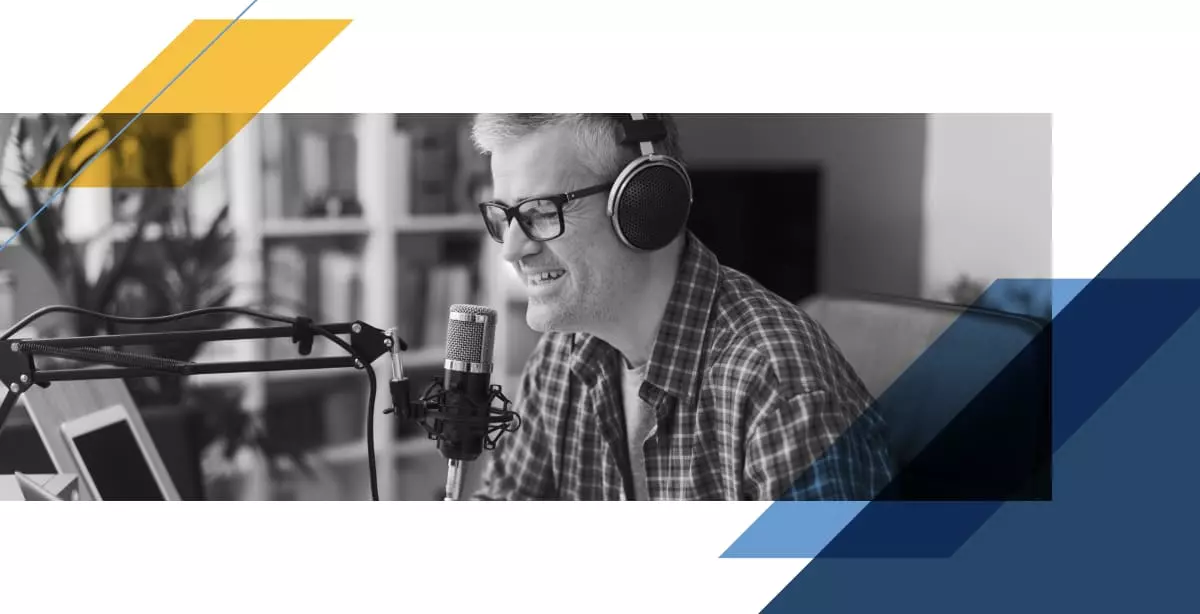5 Reasons To Consider Media Training

Have you ever seen or heard an interview that was so awkward it made you cringe? Have you ever been in a situation where you were asked a question by an editor or reporter and you didn’t know the answer, so you got flustered? Are you about to give a presentation to a group or do your first podcast or video interview at a trade show and you’re feeling nervous?
It happens! If you experience nervousness, speech anxiety or have a fear of public speaking, you’re not alone. In fact, according to the National Institute of Mental Health, “approximately 74% of people suffer from some form of speech anxiety.” Glossophobia, the fear of public speaking, is considered the most common phobia, and “45% of individuals with glossophobia feel their fear hampers their career growth.”
One way to prepare yourself or your subject matter experts is to go through communication training. Communication training — which can include media training or presentation training — can be structured based on the situation. There are many situations where this training can be helpful; a few include:
- Preparing leadership or key spokespeople with messaging for interviews (on-camera, podcasts, etc.)
- Becoming a more confident public speaker or presenter
- Answering questions succinctly in a business meeting
- Supporting an employee ambassador/advocacy program on social media
Here are five reasons to consider communication/media training:
1. You learn how to look and sound your best.
Have you heard of the 7-38-55 rule? Developed by psychology professor Albert Mehrabian at the University of California, Los Angeles, the rule says that “7 percent of meaning is communicated through spoken word, 38 percent through tone of voice, and 55 percent through body language.” So, it’s important to consider not only what you are saying but also how you are saying it with your tone and body language, particularly if you are on camera or in front of a room presenting.
There are certain “crutches” people use when they’re uncomfortable, from swaying back and forth to using filler words (such as “ummm” and “you know”) that can impact how you are perceived by others. There are tips and tricks your communication trainer can review with you to make sure you’re aware of how to put your best foot forward by reviewing eye contact, considering posture, modulating the tonality of your voice, looking at how you stand and use your space, and even reviewing the clothes you wear. These can all have an impact based on the environment and situation.
2. You dig into developing a concise and memorable key message.
Your key message is the ONE thing you want your audience to remember after you speak with them. If you’re talking to an editor/reporter, giving a podcast interview or presenting to a key audience, it is the piece of information you hope they’ll take away and — in the case of the media — include in their article or share with others around them.
Understanding how to create an effective key message with three related points that resonates with your audience is extremely important to get right. It needs to benefit you/your company and also benefit the audience/media. It can’t be self-serving; that’s NOT what audiences want to hear. Sure, your CEO would be thrilled, but if it doesn’t matter to the audience and doesn’t make it in the story (for example), then the interview was a wasted effort. Communication training can help you make sure your key message hits the right notes and has supporting examples to make it strong, meaningful and memorable.
3. You get on-camera practice and coaching on how to convey your key message.
Most people don’t enjoy being in front of the camera. And they certainly don’t like watching themselves on playback. However, it’s a crucial part in understanding your quirks and crutches so you can work on them and continually improve your overall presence — no matter the circumstance. Typically, a communication training session such as media training will include mock interviews so you can practice answering questions and using techniques like blocking and bridging back to your key messages to help you stay on track.
This on-camera practice also helps with understanding how your nonverbal communication impacts your message. Your facial expressions and what you do with your hands and eyes can all impact how you deliver your message and how people receive your message. Imagine delivering bad news, but you’re smiling. Inauthentic, right? You want your nonverbal cues to match your message and to also speak to who you are — authentic and trustworthy. This is an important skill, especially in the age of AI where authenticity is important to not only your company but your personal brand. Mastering how nonverbal cues impact not only how you feel but how others feel about you is an important part of a communication training workshop.
4. You practice how to answer questions effectively.
Sometimes questions can be difficult to answer during a presentation or a media interview. Some reasons for that are: you are not prepared to answer that specific question; you don’t know the answer; or the question itself was confusing, leaving you unsure of yourself. Questions that cause hesitation can sometimes result in a “rambling” response if you aren’t sure how to handle them properly. However, there are certain tips in mastering the art of answering questions effectively that your media and communication trainer can teach you. Learning some key tips can really help in these situations.
5. You learn how to make the most of your time through preparation.
During most of the media and communication trainings I lead, at least one person notes their goal is that they want to “learn to think on my feet.” While a good skill to have, that is something that you don’t want to have to do too much in a media interview or during a presentation. You want to:
- Outline and know your key message and supporting points,
- Practice saying your message and supporting points in different ways so you don’t sound too repetitive, and
- Convey confidence (body language/tone/etc.) when sharing your key message.
The common element? Preparation. It’s important so that, when you’re in the moment, you are not worrying about the next questions they’re going to ask you. As a result, you really are listening and can have a more relaxed, meaningful conversation, because you’re so prepared and have practiced your talking points.
Communication training can be intimidating but is a crucial step if you’re going to be representing your B2B company as a spokesperson, presenter or ambassador. Remember, training can give you and your team more confidence; the more you practice and the more you do it, the more comfortable you all will be.
Sign Up for our Newsletter - Get agency updates, industry trends and valuable resources delivered directly to you.
Melissa Einfrank - Director of Public Relations
With around 20 years of combined B2B and B2C public relations experience, Melissa has walked both red carpets and factory floors and worn both sunglasses and safety glasses in pursuit of excellence for her clients.




